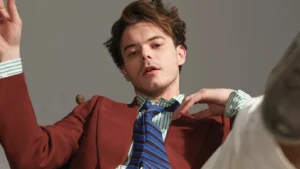Millita Bora between visceral rock and uncompromising identity

Millita Bora durante una presentación en Buenos Aires, fusionando intensidad musical y presencia escénica.
Millita Bora is an artist who defies conventional definitions within the Argentine cultural circuit. Her career flows through raw rock, independent cinema, and a high level of media exposure, yet what defines her most is a fiercely personal identity shaped by charisma, a dark aesthetic, and an interpretative intensity that never goes unnoticed. Born in Buenos Aires, she emerged as part of a generation of women who made a firm stand in a scene long dominated by men, blending powerful musical influences with a visceral stage presence.
Early steps: art, theater, and the musical calling
Before becoming a reference in Argentina’s underground rock scene, Millita Bora delved into theater and acting. Her dramatic training developed alongside a growing musical vocation, which found a natural path in punk and distortion-driven rock. This fusion of emotional depth and sonic force shaped her artistic voice from the outset. She took part in short films, experimental performances, and alternative theatrical projects until eventually channeling her creative energy into music, where she discovered a space that allowed for more genuine self-expression.
Millita Bora in music: albums, bands, and sound aesthetics
Millita’s debut album Diamantes was released in 2013 and immediately stood out for its rawness and honesty. Recorded live in studio, with a vintage aesthetic reminiscent of garage rock and rockabilly, it served as a bold introduction that defied the expectations of the commercial music industry. Songs like En la selva and Niña rica revealed her ability to blend sharp lyrics with a dramatic vocal style.
Her next album, El ciclo del amor, deepened her exploration of passionate narratives, dysfunctional relationships, and emotional turbulence through a lens that avoided clichés. Her musical influences span Iggy Pop, The Cramps, early Charly García, and even hints of tango noir. Her wardrobe, music videos, and live performances complete an artistic approach that is both theatrical and cohesive.
In addition to her solo career, Millita has collaborated with underground musicians and engaged in various experimental projects. She has performed at festivals such as Ciudad Emergente, and played in iconic venues like Niceto Club, The Roxy, and La Tangente. She’s also been part of programs that highlight the role of women in Argentine rock.
Film and television career: a multidisciplinary artist
Millita Bora has also ventured into acting. She appeared in films such as El Crítico (2013), starring Hernán Guerschuny and Dolores Fonzi, where she played a brief yet meaningful role. Her filmography includes shorts and musical documentaries, always maintaining a visual coherence that aligns her with the alternative arts scene. Her photogenic presence and dramatic instincts have helped shape a recognizable persona that transcends music.
On television, although her appearances have been occasional, they often sparked attention. In interviews, she’s never shied away from addressing personal experiences or positioning herself on issues such as feminism, the visibility of female musicians, and the need to challenge patriarchal dynamics within the music industry.
Media exposure and ties with public figures
Part of Millita Bora’s public profile grew due to her past relationship with former footballer Daniel Osvaldo, a highly visible media personality. The relationship—and her later public statements about verbal and psychological abuse—placed her in the spotlight of Argentina’s ongoing conversation about gender-based violence. Rather than adopting a victimized stance, she chose to share her experience to contribute to the broader social dialogue and highlight normalized dysfunctions in intimate relationships.
Her statements were met with support from fellow artists and activists, who saw in her voice a necessary and courageous contribution in a context where public denunciations still face stigma. Her testimony expanded the conversation about symbolic and psychological violence in media-exposed relationships and reinforced her image as an artist engaged with social causes.
Style, influences, and future path
Millita Bora doesn’t fit into narrow categories. Her voice balances seduction and rage, her look blends glam with punk, and her body of work dialogues with a countercultural tradition rooted in Argentina’s raw rock legacy. She has never pursued mainstream popularity—instead, she has consistently prioritized artistic coherence. Recurring themes in her lyrics include eroticism, emotional excess, pain, and empowerment.
Today, she continues to develop new music, collaborates with emerging artists, and explores hybrid formats that merge performance, fashion, and visual art. In the current cultural landscape—often flattened by repetition—her position as an uncompromising outsider makes her presence not only unique but necessary.





